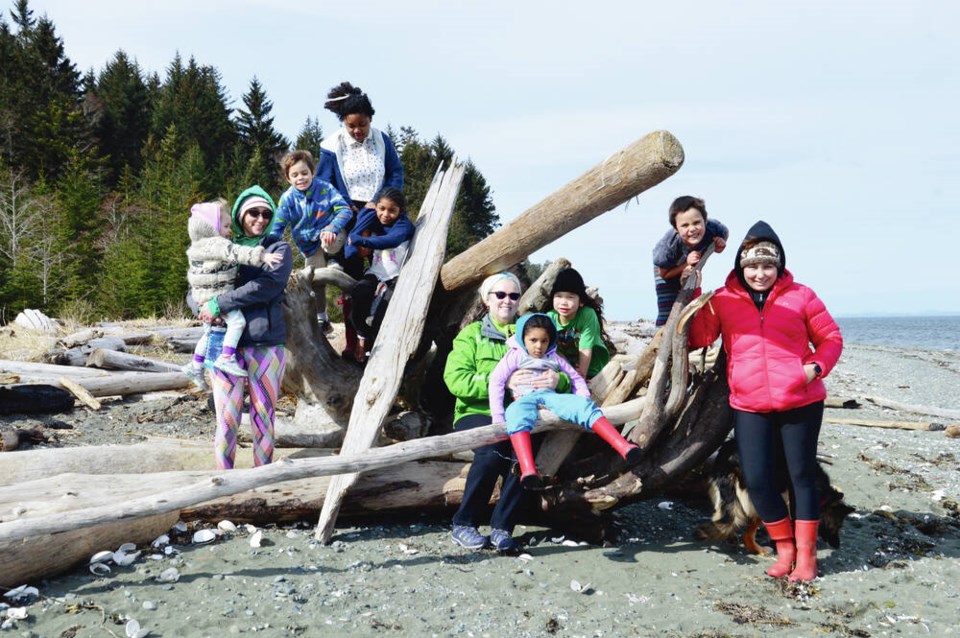During a trip to the beach, Sara Child watched the land awaken a long-forgotten word in her mother’s first language.
When Child and her mother, whose first language is Kwak’wala but who attended an Indian day school where children were beaten for speaking the language, took a beach walk a while ago, Child’s mother blurted out a phrase about the people on the beach using a word that Child had never heard her say.
“We started talking about it and she said: ‘Honey I could hear my daddy’s voice in my head. I could hear my daddy saying those exact words to me. Look at all the people on the beach,’ ” said Child, whose traditional name is tłkwama’ogwa.
Child, a professor in Indigenous education at Port Hardy’s North Island College campus, is leading a language-revitalization research project to recover Kwak’wala through land-based learning, highlighted in a recent video series on innovation by Mitacs, a not-for profit organization that fosters growth and innovation in Canada.
Child’s mother has been a mentor for her language-revitalization work, suggesting along with other elders that Kwak’wala — spoken on the northeast coast of Vancouver Island and the adjacent mainland coast — be taught in the same way they learned as children. The idea helped Child realize classroom learning alone wouldn’t yield fluent speakers and a new approach was needed.
“She learned the language by living it, by being on the beach, by being in the big house, by being with elders and grandparents, and parents, and uncles and aunties,” Child said.
That’s an experience Child is trying to replicate with current language learners, introducing Kwak’wala immersion activities into youth camps meant to help them connect with the traditional land.
Eventually, she wants to take youth by canoe to visit former village sites, where they can practise the activities their ancestors would have done, all while immersed in Kwak’wala.
Child’s research project, the Sanyakola Project, is also exploring the use of artificial intelligence and speech-to-text technology to revitalize the language. For elders physically unable to go out on the land, where they might remember forgotten words, virtual-reality technology might be able to “untrap” that language, she said.
Caroline Running Wolf, a Mitacs intern on the project, is working on the possibilities of augmented reality to immerse learners in the language, no matter where they are.
“Maybe it’s a game. Maybe it’s a canoe journey. You’re applying your language skills in the context of the language and having fun while you’re learning the language,” said Running Wolf, a PhD student in the interdisciplinary graduate studies program at the University of British Columbia and a member of the Apsáalooke Nation in Montana.



